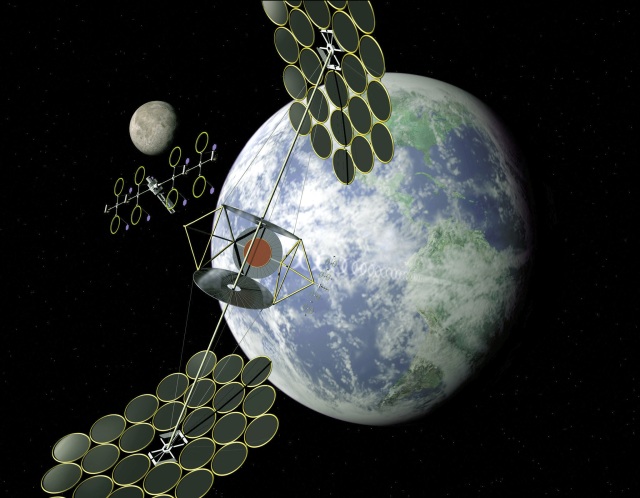It’s the ideal situation: a solar power plant that can gather the sun’s energy without any sort of impediment from weather, seasons, or time of day, and deliver constant green energy to all of Earth, day in and day out, month after month, year after year.
Obviously, this sort of system cannot be housed anywhere here on Earth. So researchers at the Japan Aerospace Exploration Agency (JAXA) looked to the sky, and then thought about going beyond and further out into space, and building a solar power plant among the stars.

Believe it or not, the idea’s not entirely new. It was actually proposed in 1968 by American aerospace engineer Dr. Peter Glaser, who championed the space solar power concept by proposing the deployment of giant solar panels in space for the purpose of generating microwaves that could be sent back to Earth to produce electricity.
The idea gathered a lot of interest, but all of the momentum for the project came to a halt in the 1980s because of the costs associated with such a project. Japan continued with the project, though, and is now the world leader of the Space Solar Power Systems project.

The mega-sized satellite would hover about 22,000 miles above Earth. It would be several miles long and weigh somewhere in the neighborhood of 10,000 metric tons. The floating solar panels would be tethered to a station on the ground to keep the satellite at a fixed point in geostationary orbit. Also, there would be a set of mirrors that reflect the sun’s light on to the panels so that even when the satellite’s not facing the sun, it can still receive the light.
So that’s the basics behind getting the technology set up. Here’s the hard part: getting all of the solar energy back to Earth. There are two ways that this could work: by converting the solar energy either to microwaves or to laser beams. Taking it a step further, there could even be a third way in which the two are combined. Whichever way is chosen, the energy would be transmitted to a specially targeted facility, referred to as a “rectenna”, short for “rectifying antenna,” here on Earth.
It all might seem a bit far-fetched, but believe it or not, there are actually ground-based experiments going on right now to figure out which way would be most efficient.
It is believed these space-based solar panels would be around 5 to 10 times more efficient than ground-based solar conversion systems. Additionally, CO2 emissions will be low, and really only come from the receiving facility.
Researchers guesstimate this system would be able to generate somewhere in the neighborhood of 1 gigawatt of power, which is similar to the amount of power generated by nuclear power stations.
Obviously, the costs associated with this sort of project are astronomical (pun intended). So, while Japan might be the leader of the project, in all likelihood other countries will have to get involved from a fiscal end to get this project up and on its way.
To learn more about Space Solar Power Systems, check out the video below:
Story via iflscience.com
Advertisement
Learn more about Electronic Products Magazine





